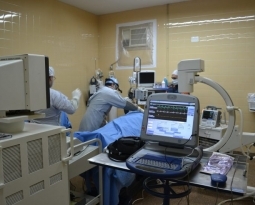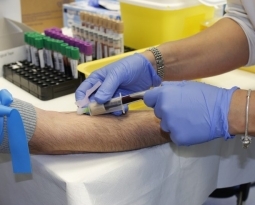Connecticut Patent of the Month – April 2022
Grover’s disease – or Transient Acantholytic Dermatosis – is a rare, temporary skin condition. The symptoms present as sudden red, raised, blistery, and sometimes very itchy spots that form around the middle of the body. This disease comes and goes with sudden onset and no warning. While steroid creams provide some temporary relief, there is no cure.
Excessive sun exposure, sweating, and heat can induce more itchy spots leading to most afflicted individuals to limit their time spent in the sun or exercising.
Recent research has shown that photo-therapy might be a more effective treatment with longer effects. Controlled exposure to natural sunlight or UV light has shown promising results as it increases T-cell activation. Unfortunately this comes with the conundrum that excessive exposure can worsen the condition.
TCellerate, LLC has designed a treatment device that delivers this photo-therapy in a controlled manner to ensure treatment is effective without passing into overexposure. Their photo-therapy device applies blue LED light onto the patient’s skin. While the treatment time and intensity can be adjusted, the patient needs to absorb between 500 and 3,000 watt-minutes of radiation to reduce or even eliminate the rash. The treatment can range from 10 minutes to an hour, with no upper limit on time.
The device looks similar to a tanning bed, with LED lights on the upper portion. The patient lays in the bed on their back to expose the front of their body to phototherapy. They can turn around to expose their back. Treatment can be applied multiple times a week, all dependent on the severity of the rash. This treatment option proves more effective than steroid treatments, working to eliminate the rash rather than reduce the itchiness. Grover’s Disease is not fatal, but living with it can be debilitating. TCellular is set on returning control to patients so that they may enjoy their life to the fullest.
Are you developing new technology for an existing application? Did you know your development work could be eligible for the R&D Tax Credit and you can receive up to 14% back on your expenses? Even if your development isn’t successful your work may still qualify for R&D credits (i.e. you don’t need to have a patent to qualify). To find out more, please contact a Swanson Reed R&D Specialist today or check out our free online eligibility test.
Who We Are:
Swanson Reed is one of the U.S.’ largest Specialist R&D tax advisory firms. We manage all facets of the R&D tax credit program, from claim preparation and audit compliance to claim disputes.
Swanson Reed regularly hosts free webinars and provides free IRS CE and CPE credits for CPAs. For more information please visit us at www.swansonreed.com/webinars or contact your usual Swanson Reed representative.

















